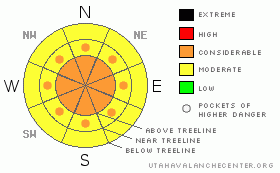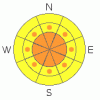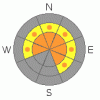|
Here's where things get weird.
We've been talking at length about the now buried January surface hoar, which sits under the infamous MLK rain crust. It's a strange combination, one that we're not used to dealing with. The fact of the matter is that it's surprising very experienced riders. Why?
Well, part of it is that the snow feels so good under our machines. It's stiff & supportable with a bit of creamy topping. Sounds like great sledding conditions, but, that doesn't tell the whole story. That supportable snow is actually a stiff & very well connected three foot deep (& growing) slab. There are weak points in the slab that we just can't see, and as soon as we ride over one of those weak points, the slab pulls out and we're off on a ride that may very well be unsurvivable.
It's misleading because you can ride a number of slopes without incident and then Wham, the next one avalanches. That's the nature of the current hazard. The slopes don't need to be big & knarly either, a number of the recent avalanches have been triggered on very low angle slopes. One recurring theme with the human triggered avalanches has been mid slope break overs/ roll overs/ convex rollers. Basically, places where the terrain rolls away.
Every significant storm has sparked a natural avalanche cycle with the surface hoar as the guilty layer. The last round of avalanches averaged 3' in depth. We're about to add another 1.5' to it, which should be more than enough snow to start a natural avalanche cycle, but this time the depths will be pushing 5'. Yikes.
So, what can we do as riders to have fun, but still get home in one piece at the end of the day? When our buddies are riding, we can stay well out of the avalanche runouts, watching our partners safely from a distance. Be aware of what's above you, as the current situation promotes remote triggering, meaning you can trigger avalanches far above you from great distances. Be heads up! We can use the terrain to our advantage too. Right now, we've got to tone down our terrain selection. We can safely ride very low angle slopes at mid & lower elevations. We can work ridgelines to get up high, but we've got to be careful that we don't get sucked into the open faces where the avalanche hazard is considerable. This kind of riding isn't nearly as thrilling as ripping up steep tree shots and open bowls, but right now, the more aggressive riding is a pure roll of the dice, and there's a reason that the house wins more often than not. |



